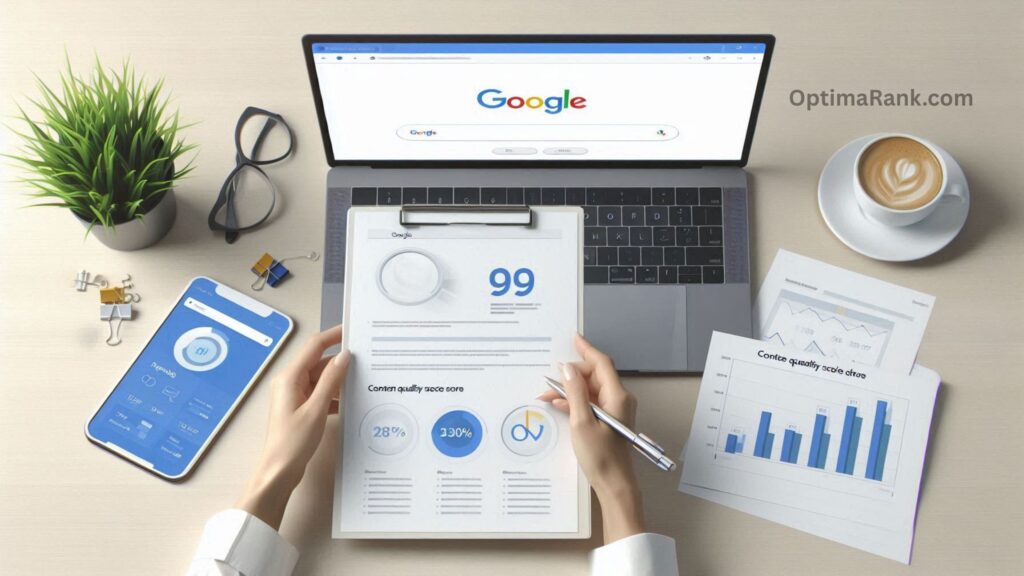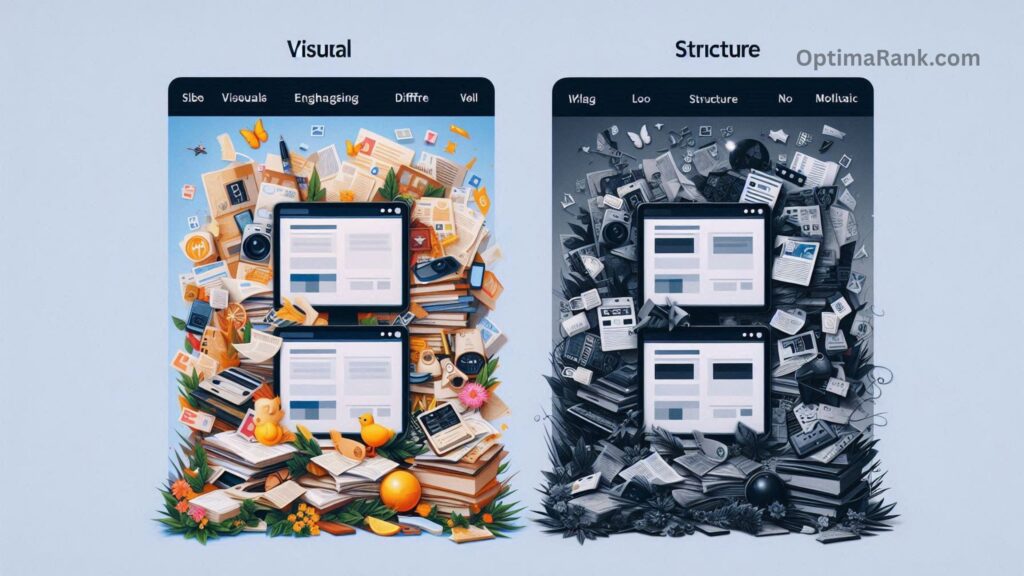How can I Balance Content Quality with SEO?
Let’s break it down simply: high-quality content is content that’s helpful, relevant, and valuable to the people you’re trying to reach. It’s not just well-written—it’s useful and engaging. And when it comes to SEO, that kind of content is a game-changer.
Good content answers your audience’s questions, keeps them interested, and makes your website more visible on search engines. But what actually makes content “high-quality”?
What Makes Content High-Quality?
It’s not just about proper grammar or pretty images. Quality content goes beyond that. It means you’re giving your audience exactly what they’re looking for—and maybe even a little more.

Here’s what high-quality SEO content should do:
- Match search intent: Make sure your content answers the specific questions people are asking. Use relevant keywords and write with your audience’s needs in mind.
- Be original and insightful: Share unique ideas, real experiences, and in-depth analysis. Avoid just repeating what everyone else is saying.
- Be easy to read and use: Structure your content with clear headings, bullet points, and a logical flow. Make it enjoyable to read.
You know what high-quality content is when you see it. The same goes for low-quality content—you can usually tell right away. Here are some red flags:
- It doesn’t answer the reader’s question.
- It’s vague, boring, or sounds like it was written by a robot.
- It’s stuffed with keywords and hard to read.
- It’s packed with pop-ups, ads, or loads slowly.
- It lacks credible sources or is just plain wrong.
- Important info is buried in long, rambling paragraphs.
- It feels like it was made just to trick search engines.

Also Read: How can I Create SEO‑friendly Content?
How Google Evaluates Content Quality
If you’re new to SEO, here’s a simple explanation: Google uses lots of signals to decide if your content is worth showing in search results. It looks at things like relevance, engagement (how users interact with your content), and how well you follow SEO best practices.

One big part of this is something called E-E-A-T:
- Experience
- Expertise
- Authoritativeness
- Trustworthiness
Even though E-E-A-T isn’t a direct ranking factor, Google cares a lot about these qualities. Why? Because people want accurate, trustworthy content from real experts—not just keyword-stuffed fluff.
A quick breakdown:
- Experience = You’ve been there, done that, and share real insights.
- Expertise = You know your stuff and can explain it clearly.
- Authoritativeness = You or your site is seen as a credible source.
- Trustworthiness = Your content is honest, up-to-date, and well-sourced.
Why Content Quality Matters for SEO
Great content helps your site rank higher in search results. When your articles are useful and interesting, people stay longer on your site, share your content, and link to it. These are all positive signals to Google.

To rank well, your content needs:
- Relevant keywords used naturally (not forced).
- A focus on search intent—give people the exact info they’re looking for.
- A people-first approach—write for your readers, not just for search engines.
When you consistently create helpful, engaging content, your organic traffic grows. That means more people find your site through Google—and stick around once they’re there.

Also Read: What Common On‑Page SEO Mistakes Should be Avoided?
Real Results Come From Real Value
Websites that publish original, helpful content (especially with firsthand data or experiences) tend to perform better. They build trust, get more links, and climb higher in search rankings.
How to Create High-Quality Content
Here’s the process made simple:

- Start with research: Know your audience. Use tools to find out what they’re searching for and which keywords they use.
- Write with purpose: Be original, clear, and helpful. Use headings, bullet points, and give readers something they can use or learn.
- Optimize without overdoing it: Add keywords naturally. Avoid stuffing. Focus on giving new, useful information.
- Think “people-first”: Always write with your readers in mind. Solve their problems and speak their language.
Formats Matter Too
Not all content has to be a blog post. The way you present information affects how useful people think it is. You can boost quality with:
- Multimedia: Images, videos, infographics, podcasts—these make content more interesting.
- Different formats: Use a mix of blog posts, case studies, social posts, and white papers depending on your goals.
- Variety: Mixing things up keeps your audience engaged and helps meet different preferences.

Also Read: How can I Enhance User Engagement for SEO?
How to Measure Content Quality
Want to know if your content is working? Here’s what to look at:

- Readability: Use tools like Hemingway or Clearscope to make sure your writing is clear.
- User engagement: Check bounce rate, time on page, shares, and scroll depth. Tools like Hotjar show what parts of your page people care about.
- Content updates: Keep your content fresh. Update it with new info so it stays relevant and accurate.
Common Mistakes to Avoid
Here are a few things that can hurt your SEO:
- Ignoring search intent: Don’t just chase keywords—make sure you’re actually answering what users want to know.
- Keyword stuffing: Cramming in too many keywords turns readers off and hurts your rankings.
- Copycat content: Don’t just reword someone else’s article. Be original and offer something new.




Post Comment